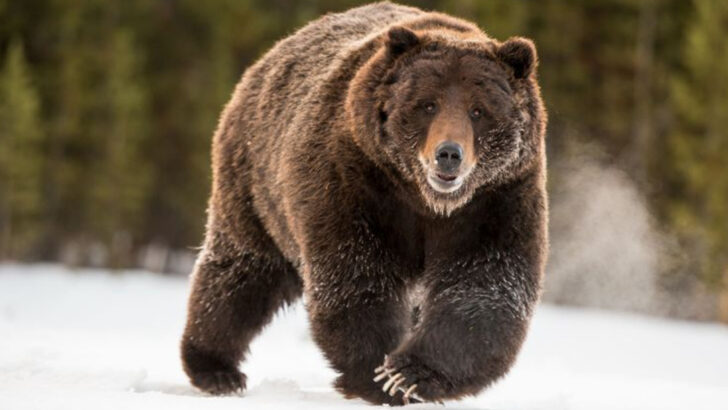Yellowstone isn’t just a park—it’s a living wilderness stage where majestic animals steal the show. From the thunderous herds of bison to the silent shadows of wolves, this land pulses with life that feels both ancient and alive. Every corner hides a story, every river whispers a secret of survival. These 15 animals are the true stars, roaming, hunting, and thriving where nature still rules. Some you’ll hear before you see. Others, you might catch in a rare, breathtaking glimpse. Yellowstone’s magic is in its wild heart—unforgettable, untamed, and still very much alive. Ready to meet the creatures that make this place legendary?
Grizzly Bear
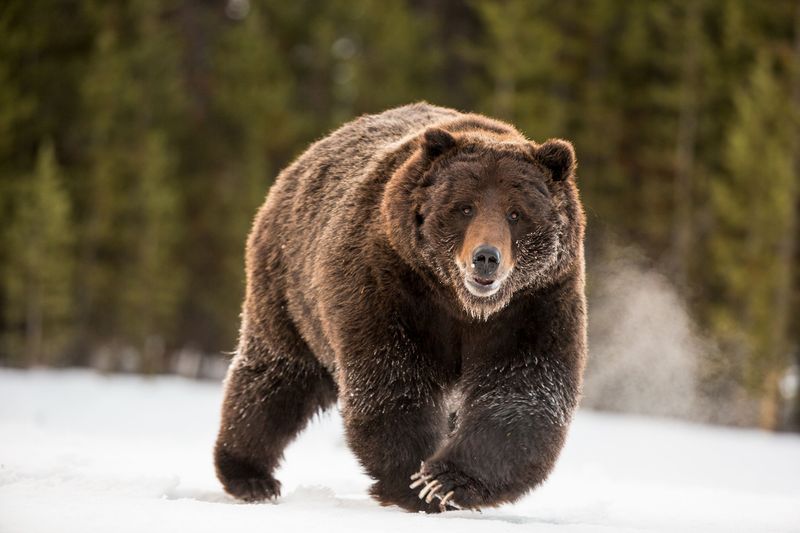
Towering with a fierce elegance, the grizzly bear is an icon of Yellowstone. These solitary giants roam the park, embodying the wild spirit of the American wilderness. With a shoulder hump and powerful forelimbs, grizzlies are adept at digging and foraging.
Their diet varies with the seasons—berries, roots, and, occasionally, prey. Their presence is a testament to the park’s health, as they are apex predators. Watching a grizzly forage or fish is a thrilling sight.
Did you know? Grizzlies can run up to 35 miles per hour, a surprising fact given their immense size and bulk.
Gray Wolf
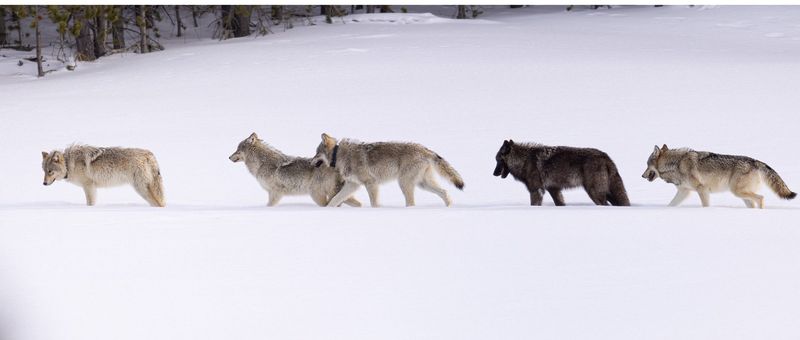
The haunting howl of the gray wolf is a sound to behold in Yellowstone. Reintroduced to the park in the mid-1990s, these wolves have become an integral part of the ecosystem. They roam in packs, coordinating hunts with strategic precision.
Wolves primarily prey on elk, helping to keep the population in balance. Their return has led to significant ecological changes, including the rejuvenation of vegetation and improved habitats for other species.
Fun fact: Wolves have a complex social structure, with each pack led by an alpha male and female.
American Bison
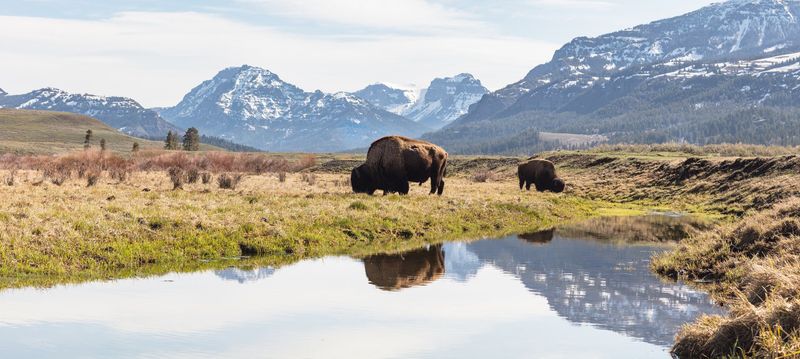
Ambling across Yellowstone’s grasslands, the American bison is a symbol of the American West. These hulking herbivores have a tranquil yet commanding presence. With thick coats and muscular builds, they are well-adapted to the harsh winters.
Bison play a crucial role in maintaining the grassland ecosystem, as their grazing patterns promote plant diversity. Often seen in herds, they are social animals with complex interactions.
Did you know? Bison are North America’s largest land animals, and despite their size, they can run up to 35 miles per hour.
Elk
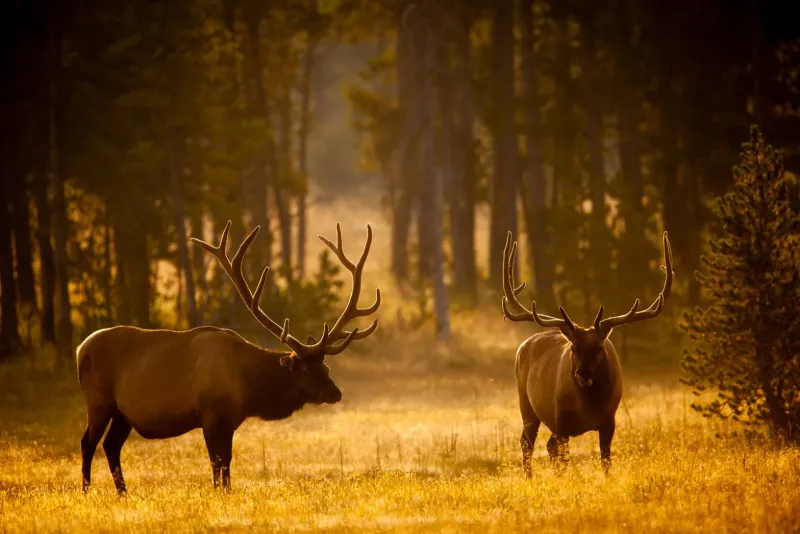
With antlers that can span up to four feet, elk are a majestic sight in Yellowstone. These graceful creatures inhabit the park’s forests and meadows, where they graze on grasses and plants.
During the fall, the haunting bugle of a bull elk can be heard, a call to challenge rivals and attract mates. Elk play a vital role in the ecosystem, supporting predators like wolves and bears.
Did you know? During the rutting season, male elk engage in fierce battles, using their antlers to assert dominance and win over females.
Bald Eagle
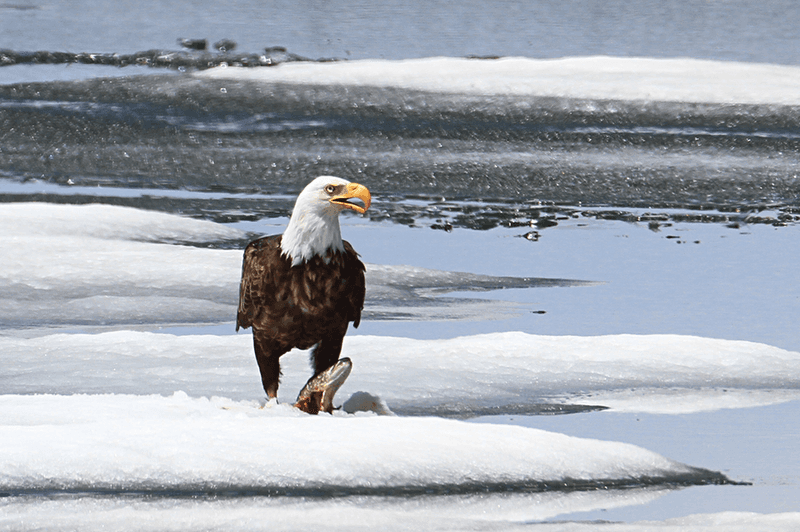
The bald eagle, with its striking white head and sharp talons, is a symbol of freedom and strength. These magnificent birds are often seen soaring high above Yellowstone’s rivers and lakes.
With keen eyesight, they spot fish and other prey from great heights. The bald eagle’s presence signals a healthy environment, as they require clean waters and abundant food.
Did you know? Bald eagles mate for life, returning to the same nest year after year to raise their young. Nests can be massive, sometimes weighing over a ton.
Moose
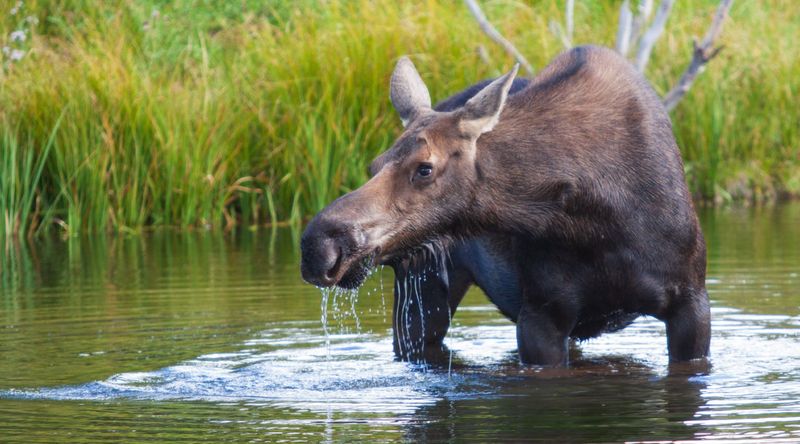
In the quiet marshes and wetlands of Yellowstone, the moose finds its haven. These solitary giants are the largest members of the deer family, easily recognizable by their broad, flat antlers.
Moose are browsers, feeding on aquatic plants, shrubs, and trees. Their long legs allow them to wade through deep snow and water with ease.
Interestingly, moose are excellent swimmers and can dive underwater to feed on aquatic plants. Their presence in Yellowstone adds to the park’s diverse habitats, offering a glimpse into the unique adaptations of these incredible creatures.
Coyote
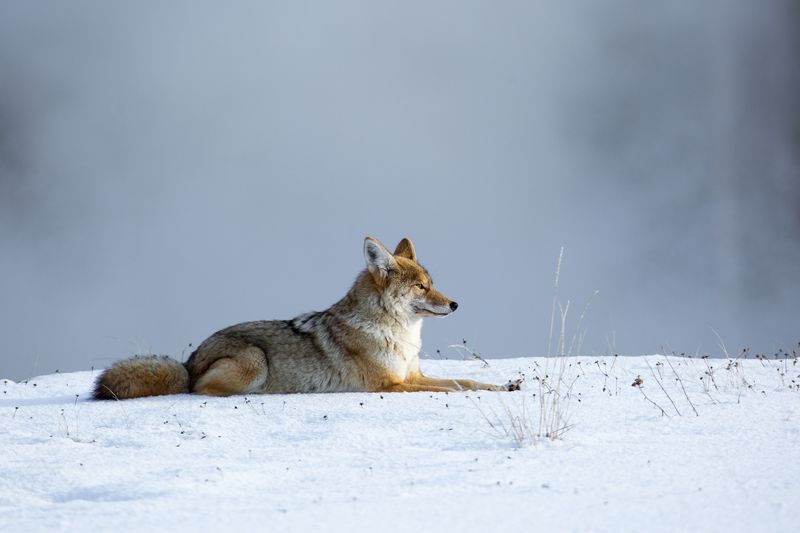
Often heard before they’re seen, coyotes are the adaptable tricksters of Yellowstone. With their distinctive howls and yips, they communicate across long distances.
Coyotes are skilled hunters and scavengers, capable of taking down prey much larger than themselves. They feast on rodents, birds, and carrion, playing a vital role in the ecosystem by controlling prey populations.
Fun fact: Coyotes have expanded their range across North America, thriving in diverse habitats from deserts to urban areas. Their cunning nature and resilience make them fascinating subjects of study.
Pronghorn
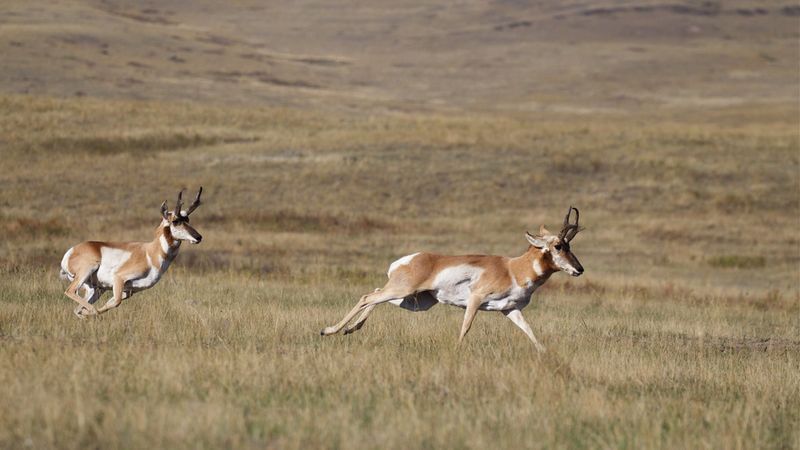
With eyes like dark pools and a speed that rivals the wind, pronghorns are the swiftest animals in Yellowstone. These elegant creatures roam the open plains, grazing on grasses and shrubs.
Pronghorns are social, often seen in small herds, and their keen eyesight helps them detect predators from afar. Their speed, reaching up to 60 miles per hour, is an evolutionary response to outrun ancient predators.
Did you know? Despite being called “antelope,” pronghorns are more closely related to giraffes. Their unique adaptations make them a marvel of evolutionary success.
Mountain Lion
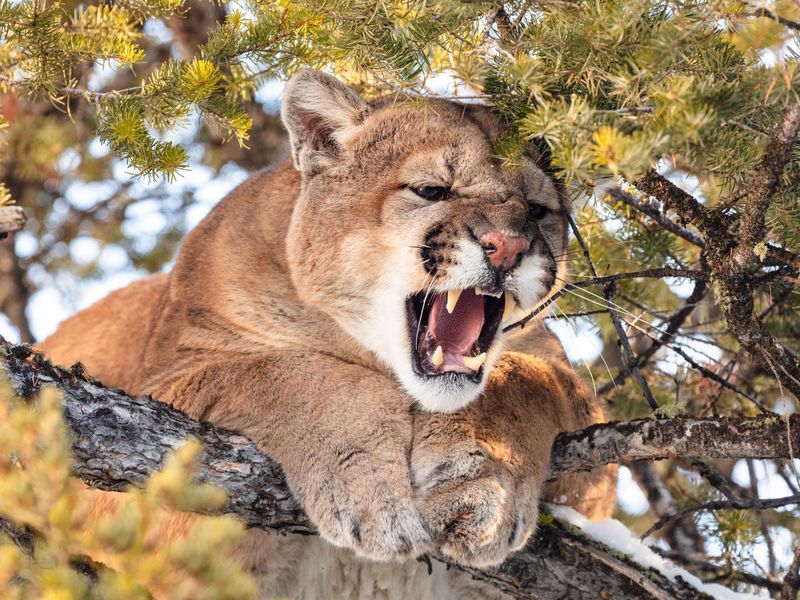
The elusive mountain lion, also known as the cougar, prowls the remote areas of Yellowstone. These solitary cats are masters of stealth, with a tawny coat that allows them to blend seamlessly into the landscape.
Mountain lions are apex predators, primarily hunting deer, elk, and smaller mammals. Their presence is crucial for maintaining ecological balance, controlling prey populations.
Did you know? A mountain lion’s roar can be heard from several miles away, a chilling reminder of their dominance in the wild. Spotting one is a rare and exhilarating experience.
Great Gray Owl
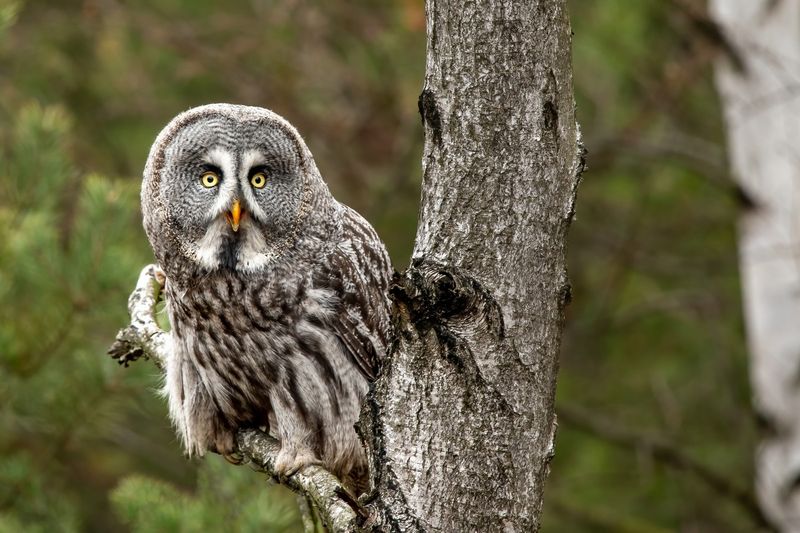
In the quiet stillness of Yellowstone’s winter, the great gray owl reigns supreme. Known for their ghostly appearance and silent flight, these owls are expert hunters.
Their large, round faces and keen hearing allow them to detect even the slightest movements beneath the snow. Their preferred prey includes voles and other small rodents.
Fun fact: Great gray owls have been known to break through snow crusts with their talons to catch prey hidden below. Their presence adds a mystical quality to the park’s winter wonderland.
Trumpeter Swan

Elegance personified, the trumpeter swan is a stunning sight in Yellowstone’s lakes and rivers. With the largest wingspan of any North American waterfowl, they glide gracefully over the water’s surface.
These swans are known for their resonant calls, which can carry for miles. They feed on aquatic plants, insects, and small fish, contributing to the aquatic ecosystem’s balance.
Did you know? Trumpeter swans were once on the brink of extinction but have made a remarkable recovery, thanks to dedicated conservation efforts. Their presence is a testament to nature’s resilience.
Red Fox
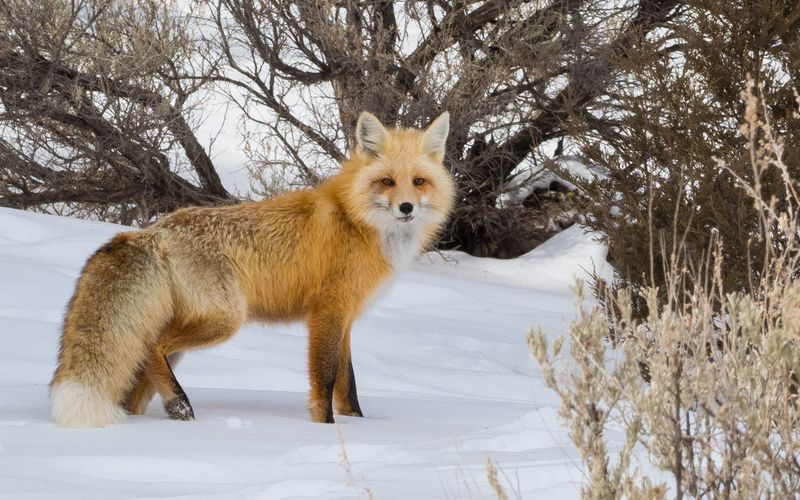
With its fiery coat and bushy tail, the red fox brings a splash of color to Yellowstone’s snowy expanses. These cunning creatures are adept hunters, using their acute hearing to locate prey beneath the snow.
Foxes are omnivorous, feeding on a diet that includes rodents, insects, and fruits. Their playful nature and curious demeanor make them a delight to observe.
Fun fact: Red foxes can make over 40 different sounds. Their vocal versatility and adaptability enable them to thrive in various environments, from dense forests to urban areas.
Bighorn Sheep
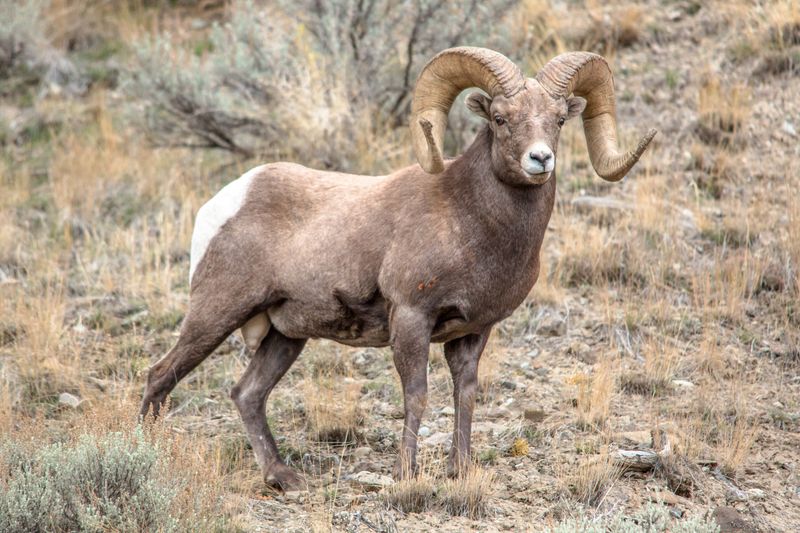
In the dramatic cliffs and rugged terrains of Yellowstone, bighorn sheep find their home. Known for their impressive curved horns, these animals typify strength and agility.
Bighorn sheep are herbivores, grazing on grasses and shrubs. Their keen eyesight and sure-footedness help them evade predators in the steep landscapes they navigate.
Did you know? Male bighorns engage in head-butting contests during the mating season, their horns crashing together with a sound that echoes through the mountains. This behavior is both a display of dominance and a test of resilience.
Yellow-bellied Marmot
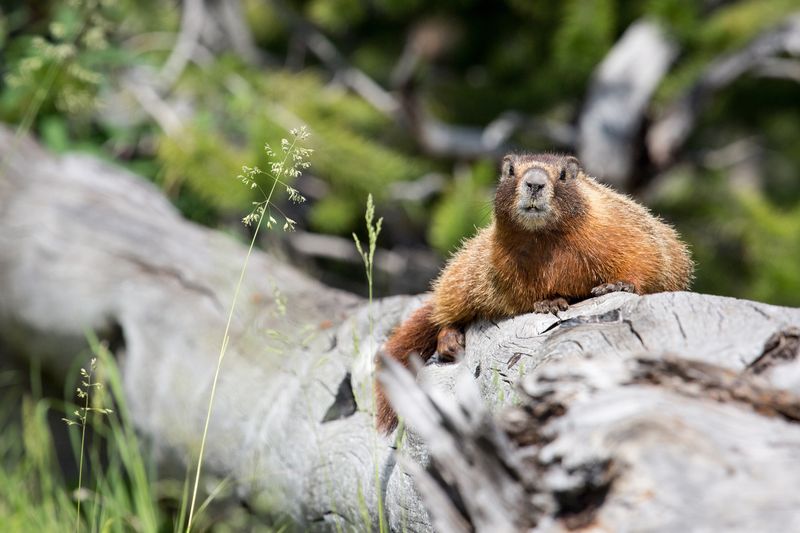
Yellow-bellied marmots, or “whistle pigs,” are the charming inhabitants of Yellowstone’s meadows and rocky outcrops. These rotund rodents are known for their whistle-like warning calls.
Marmots hibernate for much of the year, emerging in the warmer months to forage on grasses and flowers. Their social behavior and curious nature make them fun to watch.
Did you know? Marmots can double their body weight before hibernation, storing enough fat to last through the long winter months. Their cycle of activity and rest is a fascinating adaptation to the park’s fluctuating seasons.
River Otter
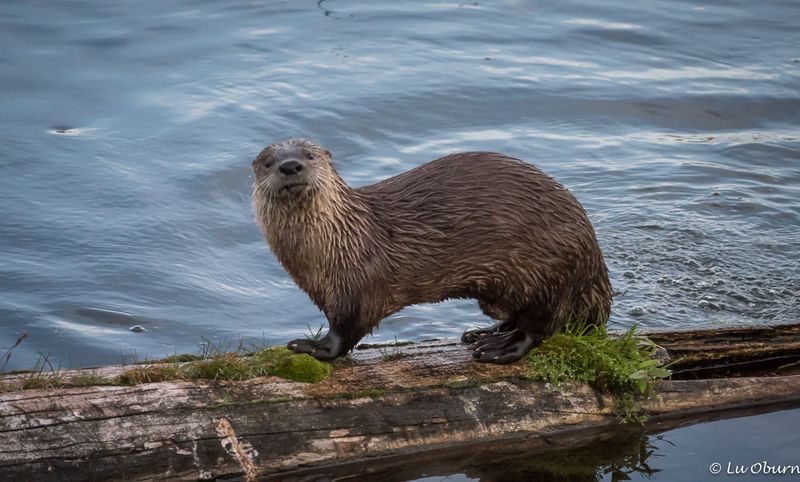
Sleek and playful, river otters bring joy to Yellowstone’s rivers and lakes. With streamlined bodies and webbed feet, they are adept swimmers, often seen sliding down riverbanks or playfully chasing each other.
River otters feed on fish, amphibians, and crustaceans, playing an important role in maintaining healthy aquatic ecosystems. Their playful antics are a delight to observe, particularly when they engage in group activities.
Fun fact: Otters use tools, like rocks, to break open shellfish, showcasing their intelligence and adaptability. These charming creatures add a lively energy to the park’s waterways.

